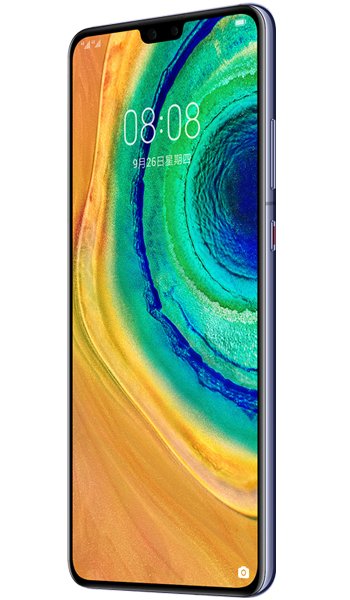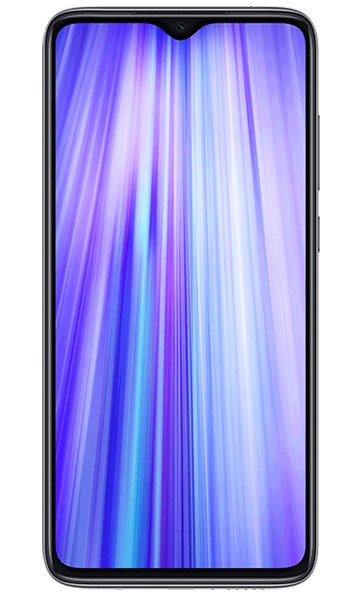Huawei Mate 30 vs Xiaomi Redmi Note 8 Pro Comparison and Differences
Smartphone 1

Huawei Mate 30
Smartphone 2

Xiaomi Redmi Note 8 Pro
Smartphone 3
Huawei Mate 30 or Xiaomi Redmi Note 8 Pro Specs Comparison
or
 Common specs
Common specs
| Brand and model | Huawei Mate 30 | Xiaomi Redmi Note 8 Pro | |
| Rating | (+) | (+) | |
| Release date | 2019, September | 2019, August | |
| Dimensions (HxWxD) | 160.8 x 76.1 x 8.4 mm | 6.33 x 6.33 x 3 in | 161.3 x 76.4 x 8.8 mm | 6.35 x 6.35 x 3.01 in | |
| Weight | 196 g | 6.91 oz | 199 g | 7.02 oz | |
| Body Build | Front/back glass, aluminum frame | Front/back glass (Gorilla Glass 5) | |
| Case | buy from Amazon | buy from Amazon | |
| Colors | Black, Space Silver, Cosmic Purple, Emerald Green | Black, Red, Blue, White | |
| Battery | 4200 mAh, Non-removable Li-Po | 4500 mAh, Non-removable Li-Po | |
| Approximate price | 550 EUR | 180 EUR | |
| Check price | from Amazon | from Amazon |
 Screen
Screen
| Technology | OLED | IPS LCD | |
| Touchscreen | capacitive touchscreen | capacitive touchscreen | |
| Display colors | 16M | 16M | |
| Screen size | 6.62" in | 6.53" in | |
| Screen area | 107.6 cm2 | 104.7 cm2 | |
| Screen format | 19.5:9 (height:width) | 19.5:9 (height:width) | |
| Screen to body ratio | 87.9% | 84.9% | |
| Screen resolution | 1080 x 2340 px | 1080 x 2340 px | |
| Screen PPI /points per inch/ | 389 PPI | 395 PPI | |
| Screen protection | Corning Gorilla Glass 5 | ||
| Other specs | - DCI-P3 -HDR10 |
||
| Screen protector | buy from Amazon | buy from Amazon |
 Camera and Video
Camera and Video
| Rear camera, main | 40 MP, Triple | 64 MP, Quad | |
| Camera specs | -40 MP, f/1.8, 27mm (wide), 1/1.54", PDAF, Laser AF -8 MP, f/2.4, 80mm (telephoto), 1/4", PDAF, Laser AF, OIS, 3x optical zoom -16 MP, f/2.2, 17mm (ultrawide) |
-64 MP, f/1.8, (wide), 1/1.7'', 0.8µm, PDAF -8 MP, f/2.2, 13mm (ultrawide), 1/4'', 1.12µm -2 MP, f/2.4, 1/5'', 1.75µm (dedicated macro camera) -2 MP, f/2.4, 1/5'', 1.75µm, depth sensor |
|
| Functions | Leica optics, dual-LED dual-tone flash, panorama, HDR | Dual-LED flash, HDR, panorama | |
| Video | 2160p@30/60fps, 1080p@30/60/120fps, 720p@960fps, gyro-EIS | 2160p@30fps, 1080p@30/60/120fps, (gyro-EIS) | |
| DxOMark Main Score | 84 | ||
| DxOMark Photo | 87 | ||
| DxOMark Video | 78 | ||
| Front camera, selfie | 24 MP, Dual | 20 MP, Single | |
| Specifications | 24 MP, f/2.0 3D TOF camera |
20 MP, f/2.0 | |
| Functions | HDR | HDR | |
| Video | 1080p@30fps | 1080p@30fps |
 Performance
Performance
| Operating system - OS | Android 10; EMUI 10 | Android 9.0 (Pie); MIUI 10 | |
| Chipset | - HiSilicon Kirin 990 5G (7 nm+) | - Mediatek Helio G90T (12nm) | |
| CPU | - Octa-core (2x2.86 GHz Cortex-A76 & 2x2.09 GHz Cortex-A76 & 4x1.86 GHz Cortex-A55) | - Octa-core (2x Cortex-A76 & 6x Cortex-A55) | |
| GPU | Mali-G76 MP16 | Mali-G76MC4 | |
| External memory | NM (Nano Memory), up to 256GB (uses shared SIM slot) | microSD, up to 256 GB (uses shared SIM slot) | |
| Internal memory | 128GB 6GB RAM, 128GB 8GB RAM, UFS3.0 | 64GB 6 GB RAM, 128GB 6GB RAM, 128GB 8GB RAM |
 Benchmark
Benchmark
| Antutu 10 Total | 358278 | ||
| Antutu 10 CPU | 121097 | ||
| Antutu 10 GPU | 70639 | ||
| Antutu 10 Mem | 74568 | ||
| Antutu 10 UX | 121097 | ||
| Antutu 8 Total | 477223 | 291733 | |
| Antutu 7 Total | |||
| GeekBench 5 Single Core | 761 | 485 | |
| GeekBench 5 Multi-Core | 2857 | 1589 | |
| GeekBench 4 Single Core | 2562 | ||
| GeekBench 4 Multi-Core | 7739 |
 Communication and Connectivity
Communication and Connectivity
| SIM card | Single SIM (Nano-SIM)Hybrid Dual SIM (Nano-SIM, dual stand-by) | Hybrid Dual SIM (Nano-SIM, dual stand-by) | |
| Network | GSM / HSPA / LTE | GSM / HSPA / LTE | |
| Bands | -2G - GSM 850 / 900 / 1800 / 1900 - SIM 1 & SIM 2 (dual-SIM model only) -3G - HSDPA 800 / 850 / 900 / 1700(AWS) / 1900 / 2100 -4G - LTE band 1(2100), 2(1900), 3(1800), 4(1700/2100), 5(850), 6(900), 7(2600), 8(900), 9(1800), 12(700), 17(700), 18(800), 19(800), 20(800), 26(850), 28(700), 32(1500), 34(2000), 38(2600), 39(1900), 40(2300), 41(2500), 66(1700/2100) - Global LTE band 1(2100), 2(1900), 3(1800), 4(1700/2100), 5(850), 6(900), 7(2600), 8(900), 9(1800), 12(700), 17(700), 18(800), 19(800), 20(800), 26(850), 34(2000), 38(2600), 39(1900), 40(2300), 41(2500) - China |
-2G - GSM 850 / 900 / 1800 / 1900 - SIM 1 & SIM 2 -3G - HSDPA 850 / 900 / 1900 / 2100 -4G - LTE band 1(2100), 3(1800), 5(850), 7(2600), 8(900), 40(2300), 41(2500) |
|
| Speed | HSPA 42.2/5.76 Mbps, LTE-A | HSPA 42.2/5.76 Mbps, LTE-A | |
| GPRS | Yes | Yes | |
| Edge | Yes | Yes | |
| Wi-Fi | Wi-Fi 802.11 a/b/g/n/ac, dual-band, DLNA, Wi-Fi Direct, hotspot | Wi-Fi 802.11 a/b/g/n/ac, dual-band, Wi-Fi Direct, hotspot | |
| GPS | Yes, with dual-band A-GPS, GLONASS, BDS, GALILEO, QZSS | Yes, with A-GPS, GLONASS, BDS | |
| NFC | Yes | Yes | |
| USB | 3.1, Type-C 1.0 reversible connector, USB On-The-Go | 2.0, Type-C 1.0 reversible connector | |
| Bluetooth | 5.1, A2DP, aptX HD, LE | 5.0, A2DP, LE |
 Music and Audio
Music and Audio
| Radio | No | FM radio, recording | |
| Headphone jack | Yes | Yes | |
| Others | - 32-bit/384kHz audio -Active noise cancellation with dedicated mic |
- Active noise cancellation with dedicated mic |
 Other features
Other features
| Sensors | - Face ID, fingerprint (under display, optical), accelerometer, gyro, proximity, barometer, compass , Infrared port | - Fingerprint (rear-mounted), accelerometer, gyro, proximity, compass , Infrared port | |
| Other extras |
- Fast battery charging 40W -Fast wireless charging 27W -Power bank/Reverse wireless charging - IP53 dust and splash protection |
- Fast battery charging 18W (Quick Charge 4+) |
|
| Versions |
- Versions: TAS-AL00, TAS-TL00 (China) |
Reviews and Opinions on Huawei Mate 30 and Xiaomi Redmi Note 8 Pro
If you had to recommend one of these phones to a friend, which one would it be and why? Share your arguments using the Add Opinion button!

